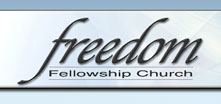

Halloween - Night of the Walking Dead
by Steve Wittmann
Halloween - Night of the Walking Dead
Click the play button to begin video lesson and follow along with the lesson notes below the video window.
Halloween - Night of the Walking Dead
According to the National Retail Federation, more than 159 million Americans will spend over 6.9 billion dollars on Halloween in 2015.
In a survey conducted by the Christian Bible Network, one Christian replied...
“I think Halloween is as harmful as you make it. There are those who use this night as a reason to do séances and commit random acts of mischief. However, the idea that the devil is running amok through the streets of your town especially on Halloween night is rooted in fear. And we as Christians don’t operate in that. If we’re victorious in Christ, surely that grace extends through the month of October…So if you’re scared that passing out candy is inviting Satan into your home, I’ve got news for you. Jesus reigns!”
While this sentiment sounds biblical, is this also God’s view?
Consider James 4:4...
“do you not know that friendship with the world is hostility toward God? Therefore whoever wishes to be a friend of the world makes himself an enemy of God.”
Or how about Jeremiah 10:2-3?
“Learn not the way of the heathen…For the customs of the people are vain”
The History
- The Celts
- The Celts lived 2,000 years ago in what is now Ireland, Great Britain, and Northern France.
- Druids were the Celt’s holy men who led the worship of nature, the sun, and oak trees. This same type of nature worship can be seen today in Wicca, the religion of the modern witch.
- The Celts’ calendar year began on November 1st. The Samhain festival marked the end of summer and was one of the most important calendar events of the Celtic year. Samahin literally means Summer’s End. At Samhain, held on November 1st, the world of the gods was believed to be made visible to man and the gods played many tricks on their mortal worshippers. It was a time of fear, danger, and the supernatural. Sacrifices to their gods was believed vital for without them the Celts believed they could not prevail over the perils of the season or counteract the activities of the deities.
- From October 31st to November 2nd, the Celts celebrated a 48-hour festival called the Vigil of Samhain. They believed Saman, the pagan lord of the dead, assembled the souls of those who had died during the previous year and decided what form they would take for the next year. The souls would either pass on to human bodies or would be condemned to live within animals. The most evil of the bad would or spirits would take the form of cats. Hoping to coax Saman into giving lighter sentences, the Druid worshippers tried to bribe him with gifts and prayers. - (Is this a counterfeit Passover?)
- On October 31st, the eve of the New Year, after harvesting their crops and storing them for the winter, the festival began. First they extinguished the cooking fires in their homes. Then the Druids (Celtic priests) met on hilltops in the dark oak forests (they viewed oak trees as sacred) and built huge bonfires to frighten away evil spirits and to honor the sun god. Next, the people would burn crop and animal sacrifices to their gods, dancing around the fires as the season of sun passed and the season of darkness began. The Celts wore costumes of animal heads and skins and told each other their fortunes. (i.e. divination) The next morning, they re-lit their cooking fires from the sacred bonfires, in order to free them from evil spirits as well as protect them during the coming winter.
- The Romans
- During the first century, the Roman Empire invaded Ireland and the British Isles conquering most of the Celtic territory.
- The Romans ruled for several hundred years mixing the Celts’ festival of Samhain with the Roman celebrations of Feralia and Ponoma Day. (The Catholic Church tried to erase both pagan holidays and failed. They only succeed in endorsing the pagan celebrations by the church.)
- Feralia was held on February 21st and was a Roman holiday honoring the dead. In reality, it was mass drunkenness and orgies, much like other Roman holidays.
- Ponoma Day was celebrated on November 1st. It was a festival in honor of Ponoma, the Roman goddess of fruit, trees, and fertility. Ponoma’s sacred symbol was the apple.
- Over the next 300 years the cultural practices of the Celts and the Romans merged together.
- The Catholic Church
- The early Christian church was an illegal religion under Roman rule and many in the early years became martyrs. At first, the Catholic Church observed the martyrs anniversaries, but before long there were more martyrs than calendar days in the year.
- In 609 A.D. Pope Bonidace IV declared the Roman holiday Feralia to be Christian. Instead of honoring the dead as the Romans did, Pope Bonidace declared it a day of prayer and meditation to honor the dead saints. He changed the name from Feralia to All Saints Day.
- Around 735 A.D., Pope Gregory III consecrated a chapel in the Basilica of St. Peter to all the saints and fixed the anniversary to November 1st. He then broadened the festival to include all saints as well as all martyrs.
- Meanwhile the Celts were still observing the festival of Samhain from October 31st to November 2nd. Pope Gregory IV attempted to replace the festival of Samhain by moving All Saints Day from May 13th to November 1st but in doing so, he officially extended the pagan celebration to the entire church.
- Soon All Saints Day on November 1st became known as All Hallows Day and October 31st became All Hallows Eve and eventually Halloween.
The Traditions
- The Zombie
- The zombie has no historical roots to Halloween. The zombie is a Hollywood creation for the horror movie genre. The brain-eating, walking dead zombie was never heard of before the release of White Zombie starring Bela Lugosi in 1934.
- The Jack-O-Lantern
- When the Irish immigrants arrived in America, they brought with them the tradition of carving-out turnips (or, sometimes, a potato or rutabaga) and placing coals or a small candle inside the hollow. These were then displayed on doorsteps at Halloween to ward off evil spirits. However, the Irish quickly discovered that Jack-O-Lanterns were much easier to carve out of the pumpkin which was a fruit native to their newly-adopted home in America.
- The Irish tradition of carving first a turnip and then a pumpkin is based on a myth known as The Legend of Stingy Jack.
The Legend of Stingy Jack...
Stingy Jack was a miserable, old drunk who loved playing tricks on anyone and everyone. One dark, Halloween night, Jack ran into the Devil himself in a local public house. Jack tricked the Devil by offering his soul in exchange for one last drink. The Devil quickly turned himself into a sixpence to pay the bartender, but Jack immediately snatched the coin and deposited it into his pocket, next to a silver cross that he was carrying. Thus, the Devil could not change himself back and Jack refused to allow the Devil to go free until the Devil had promised not to claim Jack's soul for ten years.
The Devil agreed, and ten years later Jack again came across the Devil while out walking on a country road. The Devil tried collecting what he was due, but Jack thinking quickly, said, "I'll go, but before I do, will you get me an apple from that tree?"
The Devil, thinking he had nothing to lose, jumped up into the tree to retrieve an apple. As soon as he did, Jack placed crosses all around the trunk of the tree, thus trapping the Devil once again. This time, Jack made the Devil promise that he would not take his soul when he finally died. Seeing no way around his predicament, the Devil grudgingly agreed.
When Stingy Jack eventually passed away several years later, he went to the Gates of Heaven, but was refused entrance because of his life of drinking and because he had been so tight-fisted and deceitful. So, Jack then went down to Hell to see the Devil and find out whether it were possible to gain entrance into the depths of Hell, but the Devil kept the promise that had been made to Jack years earlier, and would not let him enter.
"But where can I go?" asked Jack.
"Back to where you came from!" replied the Devil.
The way back was windy and very dark. Stingy Jack pleaded with the Devil to at least provide him with a light to help find his way. The Devil, as a final gesture, tossed Jack an ember straight from the fires of Hell. Jack placed the ember in a hollowed-out turnip...one of Jack's favorite foods which he always carried around with him whenever he could steal one. From that day forward, Stingy Jack has been doomed to roam the earth without a resting place and with only his lit turnip to light the way in the darkness.
- The Skull
- Use of the skull, especially a lighted skull, is believed to originate with the Druids and witch covens. Due to human sacrifices, skulls were plentiful at places of worship. Candles were sometimes placed in skulls to partially shelter them from the wind and like the Jack-o Lantern they were used as lanterns.
- Bats
- Insects were drawn to the light of the Druid bonfires and bats were drawn to the insects. The sight of bats flying over the Druid’s bonfires was a common and bats were soon associated with the festival of Samhain.
- Trick or Treating
- Bonfires — In preparation of the festival of Samhain, persons would go from door-to-door begging wood and other burnable materials for the Druid’s bonfires. It is believed that this practice was a precursor to trick or treating.
- Soul Cakes — During All Souls Day in England, poor citizens would beg for food and families would give them pastries called “soul cakes” in return for the promise to pray for the wealthier family’s departed relatives. The giving of soul cakes was encouraged by the church as a way to replace the ancient practice of leaving food and wine for roaming spirits. The custom was known as “going-a-souling” and was eventually practiced only by the children who would visit the houses in their neighborhoods and be given gifts of ale, food, and money.
- The Halloween Costume
- In Druid belief, the lord of the dead Saman, would allow the recently departed that were found worthy, to return to human form by finding a human and occupying a living person. For this reason, many of the still-living would don masks and costumes to disguise themselves as fellow wandering spirits and thus avoid detection and possession. Such persons were known as “guisers” for their disguises.
- In ancient times, it was believed that the spirits of the departed would return to visit their old homes during the festival of Samhain and later All Hallows Eve. People put out food for these spirits and arranged chairs for a place to rest. It was believed this tradition eventually evolved into persons masquerading themselves as the departed spirits and journeying from door-to-door begging treats.
- Fruits & Nuts
- Handing out of fruits and nuts may have originated from Pomona Day, named for the Roman goddess of fruits, trees, gardens, harvests, and fertility.
- Fruits and nuts were used during divination games to discern future events.
- Bobbing for Apples
- The Romans viewed the apple as a sacred symbol of their goddess Pomona.
- Apple ducking or bobbing-for-apples as we say today was a divination game used to predict future love and marriage.
- Apple ducking represented soul symbols (apples) in the “Cauldron of Regeneration” (the water) similar to the lord of the dead gathering dead souls to regenerate those who had been condemned to inhabit animals for the past year.
- Another divination game with the apple had a girl peeling an apple with her back to a mirror in which an apparition of her future husband was believed to appear.
- Telling Fortunes - Halloween was thought to be the most favorable time for divinations concerning marriage, luck, health, and death.
- Telling Ghost Stories
- Telling of ghost stories appears to have a bit more modern roots. Early records show Colonial America Halloween festivities to include the telling of ghost stories.
- Mischief & Playing Tricks
- The Celts believed that the ghosts of the dead who returned to earth on the night of Oct. 31st caused trouble and damaged crops. They also believed that their gods played tricks on them.
- Witches
- Witches can be traced back to the time of the Celts where they were considered wise healers knowledgeable in the arts of medicine known today as sorcery.
- It was the Christian church that first painted the witch as an ugly old hag with a warted nose who cast spells and charms over good men and women.
- Considered a cohort of the devil, witches were associated with cats, bats, and spiders.
- Modern day witches practice Wicca, a pagan religion that worships nature, the mother earth as Gaia, and personifies Romans 1:25 which tells of worshiping the creation instead of the Creator.
- Black Cats
- The Druids believed that during the festival of Samhain, ghosts, spirits, fairies, witches, elves, and all sorts of supernatural manifestations emerged to harm the living. It was believed that for their evil deeds during life, people were transformed into cats – especially black cats.
- Later Catholic traditions blended with Celtic belief and eventually turned the cat into a witch’s familiar spirit, along with the belief that the witch herself held mystical knowledge to transform herself into the form of a cat.
- Bonfires
- “In ancient Britain and Ireland, the Celtic festival of Samhain eve was observed on October 31, at the end of summer. (It) was the occasion for one of the ancient fire festivals when huge bonfires were set on hilltops to frighten away evil spirits…The souls of the dead were thought to revisit their homes on this day, and the autumnal festival acquired sinister significance, with ghosts, witches, hobgoblins, black cats, fairies, and demons of all kinds said to be roaming about." (Encyclopedia Britannica).
- Often people were thrown into the fires and to their death during the festivals. Such acts were seen as sacrifices to the gods. The next day, all that would be left were the bones of the people sacrificed leading to the fires being called bone-fires from which we get our modern word bonfire.
- Parades & Parties
- Celtic priestesses would roam the countryside chanting in order to frighten away evil spirit believed to be roaming about on All-Hallow’s Eve.
- The Celts, Scots, and Welsh built bonfires for parading, dancing and merry-making. The Scots assembled marriage-minded young people for divination games. This practice was brought to America and became play and Halloween parties.
Understanding God’s View
Concerning pagan practices, God says in Jeremiah 10:2-3:
“Learn not the way of the heathen, and be not dismayed at the signs of the heaven; for the heathen are dismayed at them. For the customs of the people are vain.”
Notice that this verse not only addresses pagan practices in general, but also is specific concerning divination? “Dismayed at the signs of the heavens” refers to astrology or fortunetelling by way of the stars in the sky or heavens.
God’s view on fortunetelling and divination is abundantly clear in Deuteronomy 18:9-12 in which God calls divination “detestable.”
"When you enter the land which the LORD your God gives you, you shall not learn to imitate the detestable things of those nations.” Deuteronomy 18:9
God’s warning to not participate in pagan practices is repeated in Leviticus 18:3 as God is preparing His people to enter the land of Canaan:
“You must not do as they do in Egypt, where you used to live, and you must not do as they do in the land of Canaan, where I am bringing you. Do not follow their practices.” (NASB)
And as if to make doubly-sure that His message is absolutely clear, God repeats Himself in Leviticus 18:30 by saying...
“Thus you are to keep My charge, that you do not practice any of the abominable customs which have been practiced before you, so as not to defile yourselves with them; I am the LORD your God.” (NASB)
God also addresses taking pagan practices and calling then holy so as to make them permissible. Consider His words in Ezekiel 22:26...
"Her priests have done violence to My law and have profaned My holy things; they have made no distinction between the holy and the profane, and they have not taught the difference between the unclean and the clean; and they hide their eyes from My sabbaths, and I am profaned among them.”
This specifically addresses the arguments that Halloween is just childish fun and harmless. The idea that a pagan rooted celebration honoring a pagan god of the dead can be washed clean of its pagan roots and simply by arguing that Halloween is nothing more than a fun time for children is foolishness. You cannot make a pagan holiday holy by declaring it so, by dressing children in cartoon-character costumes, or by taking the celebration off the streets and moving it into a church fellowship hall.
Now with that said, take care to not become legalistic with that knowledge. Understanding the dangers of pagan rooted rituals, symbols, and gods is important but not as important as listening to what God would have you do with the knowledge. Let The Holy Spirit be your guide.
Who is the Lord of the Dead?
- As we have seen, the historical origin of Halloween is rooted in pagan celebrations of Saman – the Druid’s lord of the dead, but who does the Bible recognize as lord of the dead?
- According to Hebrews 2:14 the Bible recognizes Satan, the devil as lord of the dead but only in the past tense!
- “…that through death He might render powerless him who had the power of death, that is, the devil”
- So, if the devil is no longer the lord of the dead, who is? None other than Jesus Christ Himself as verified in Romans 14:9...
- “For to this end Christ died and lived again, the He might be Lord both of the dead and of the living.”
- If we choose to celebrate the lord of the dead, then we must be celebrating the resurrected Jesus Christ and not the dead gods of the fallen world – for He alone has power over death.
Should Christians Celebrate Halloween?
It is up to you and your family to choose whom you will celebrate and whom you will serve. If you wish to honor God through your choices and be true to His word, then consider what God says about celebrating pagan holidays...
Joshua 24:15 “If it is disagreeable in your sight to serve the LORD, choose for yourselves today whom you will serve…”
Leviticus 18:30 “…do not practice any of the abominable customs which have been practiced before you.”
Jeremiah 10:2-3 “Learn not the way of the heathen…For the customs of the people are vain.”
1 Corinthians 10:31 – “Whether, then, you eat or drink or whatever you do, do all to the glory of God.”
Colossians 3:17 – “Whatever you do in word or deed, do all in the name of the Lord Jesus, giving thanks through Him to God the Father.”
What's Next?
If you enjoyed this lesson, we encourage you to consider studying other ICM full-length courses via digital download or by enrolling in a degree program at the International College of Ministry.
|
You may be closer to a degree than you realize. Find out now how you can receive your degree from ICM College. Request your FREE evaluation today. |







